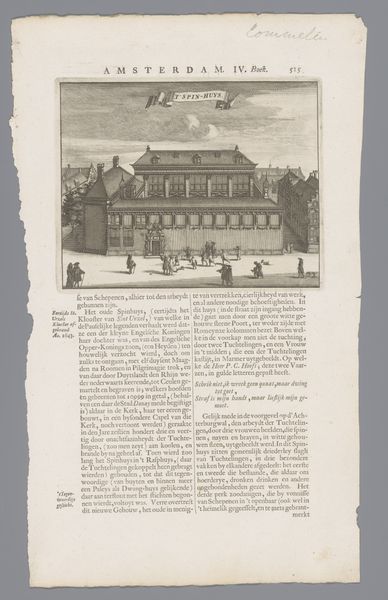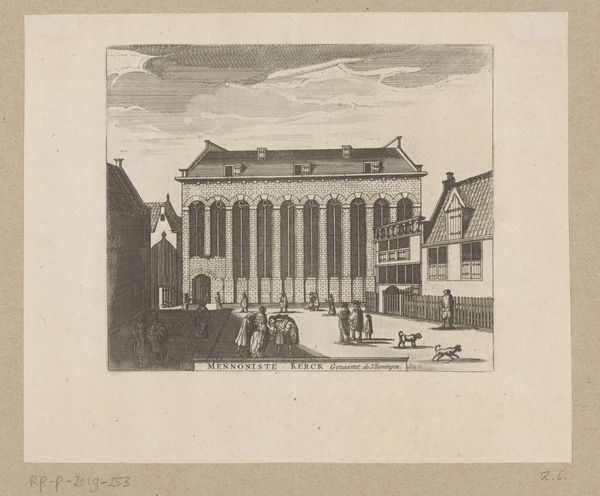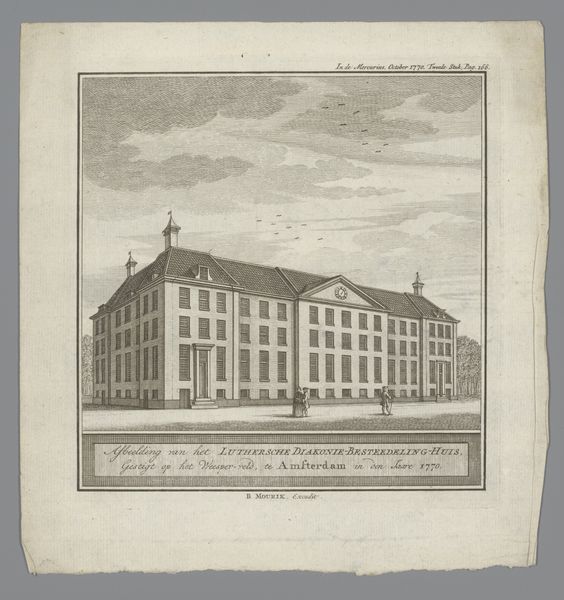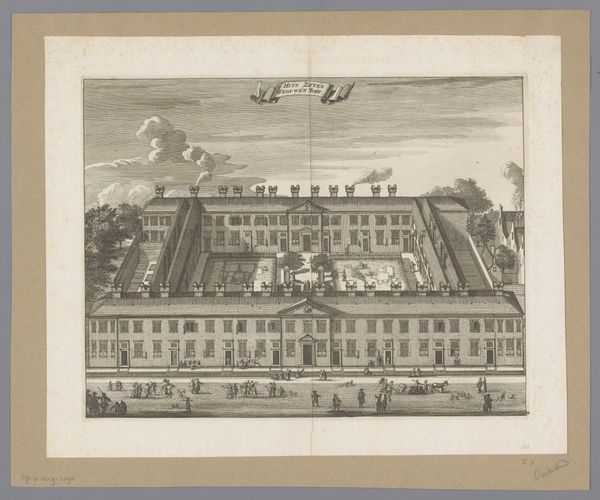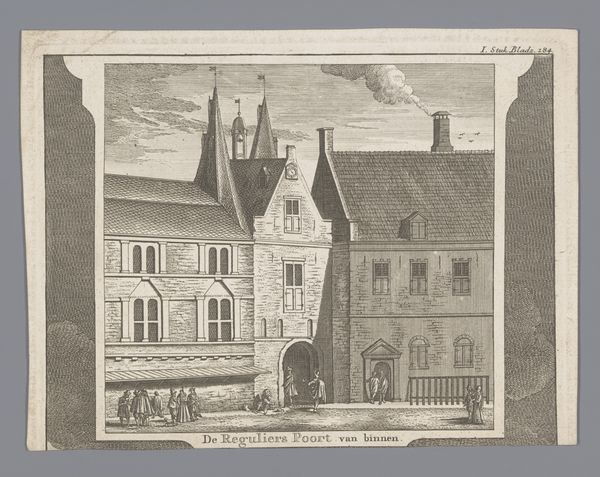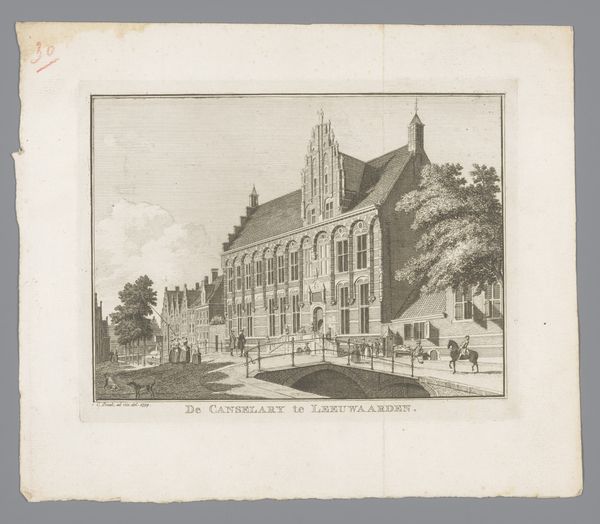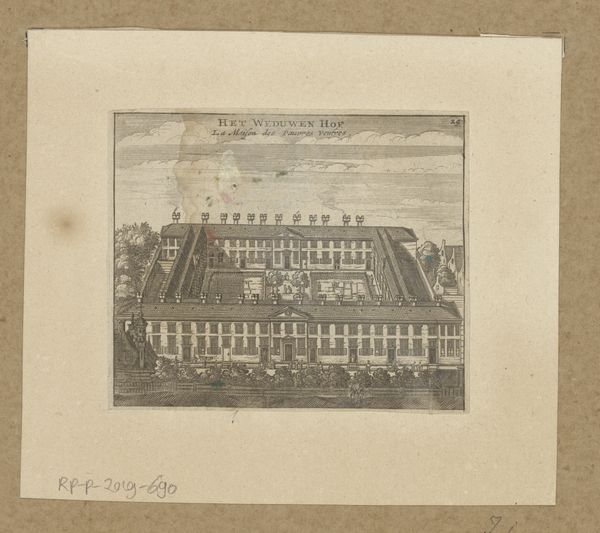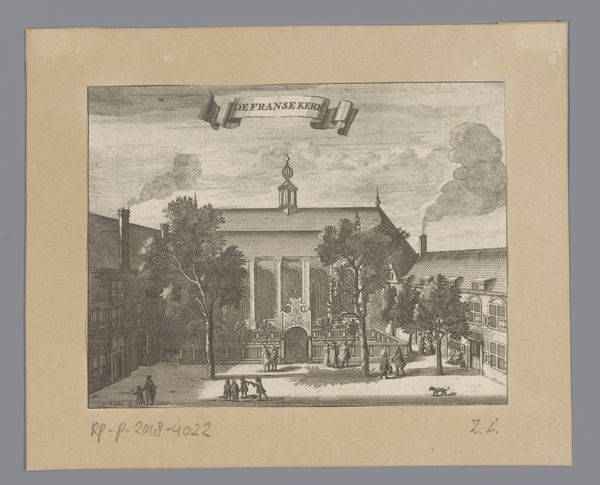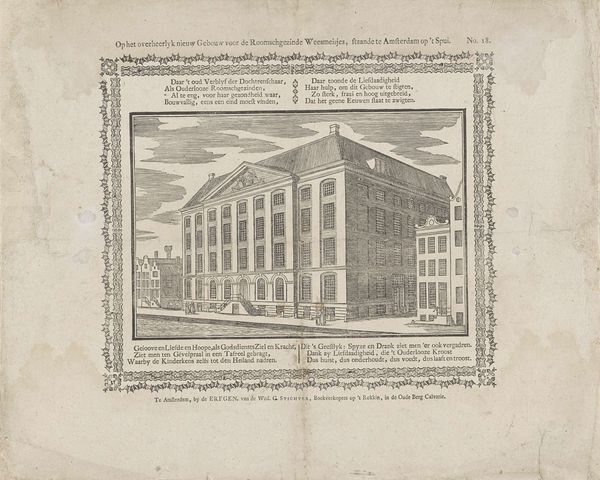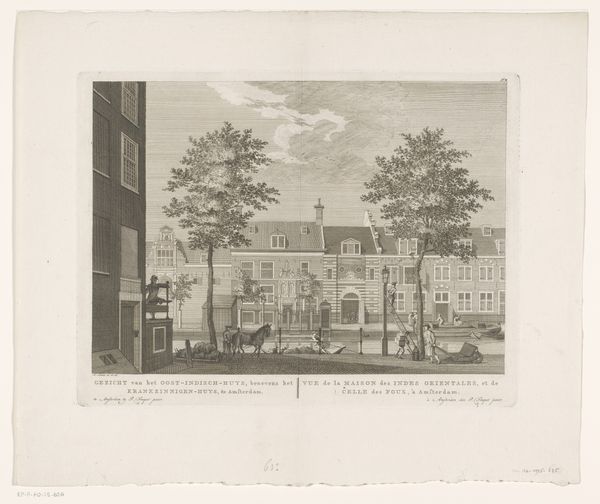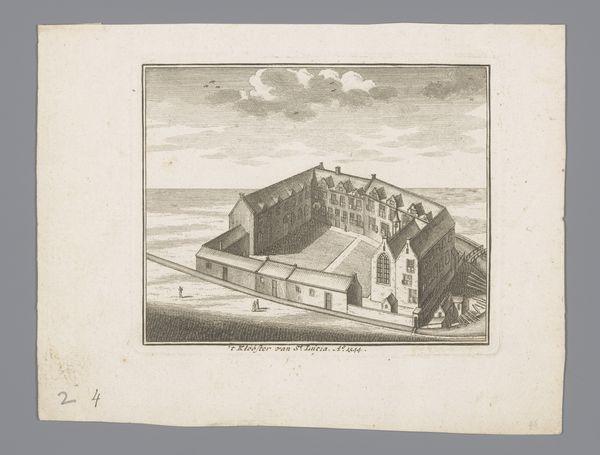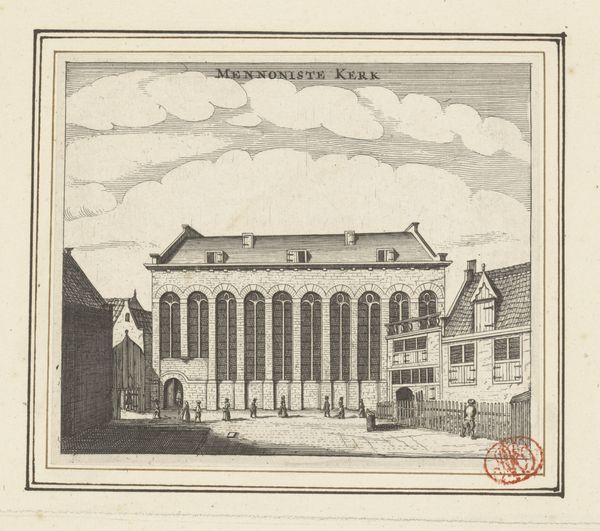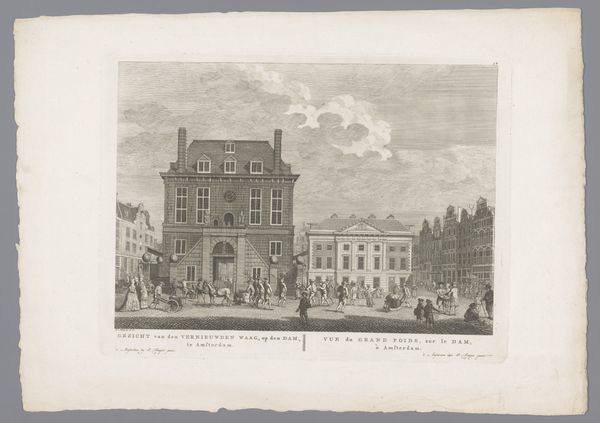
Gezicht op de Doopsgezinde Singelkerk gezien vanaf de Herengracht te Amsterdam 1726
0:00
0:00
print, etching, engraving
#
baroque
#
dutch-golden-age
# print
#
etching
#
landscape
#
cityscape
#
engraving
Dimensions: height 150 mm, width 163 mm
Copyright: Rijks Museum: Open Domain
Curator: This print, residing here at the Rijksmuseum, is entitled "Gezicht op de Doopsgezinde Singelkerk gezien vanaf de Herengracht te Amsterdam," created around 1726 by an anonymous artist. It's rendered through etching and engraving techniques. Editor: My immediate sense is one of austere grandeur. The imposing façade of the church and the clean lines establish a harmonious, yet almost severe visual order. Curator: Indeed. What stands out is the evident attention to detail in rendering the architectural elements. You see a fascinating interplay between the printmaking medium, here specifically etching and engraving, and the representation of a powerful, new church in Amsterdam. This work encapsulates the values of Dutch Golden Age society: a meticulous capturing of spatial relationships, a celebration of progress. Editor: I’m struck by the way the artist uses line to define form. The regularity of the fenestration creates a rhythm, only broken at the top by the artist where the facade follows classical rules for roof decoration. I suppose it can be said it speaks to more than just an aesthetic preference. I believe the evenness represents the very order the Mennonites sought. Curator: Exactly! The choice of the church's location on the Herengracht also reflects a specific social context: the ambition and wealth of its community as Amsterdam becomes a global trading hub. It's hard to say who made this print exactly. Was it someone from within the Mennonite community keen to establish a presence or impress, or someone wanting to document these shifting forces in Dutch life? Editor: Good question! It would be valuable to identify more of the human aspects. We can deduce so much simply from how its structural components speak both to utility and religious principles. How many artisans might have contributed skill and materials here? Or how much does this church, from the perspective of scale, color, shape, and symmetry contribute to a sense of peace for the artist? Curator: Viewing this work with your emphasis allows one to really understand what goes into building Amsterdam - the faith and commerce embodied within those decisions. It's far more layered than just a scenic view of a church. Editor: Ultimately, looking at the print shows one more layer that this image adds to Dutch society at the time: faith, politics and craftsmanship together tell a history.
Comments
No comments
Be the first to comment and join the conversation on the ultimate creative platform.
